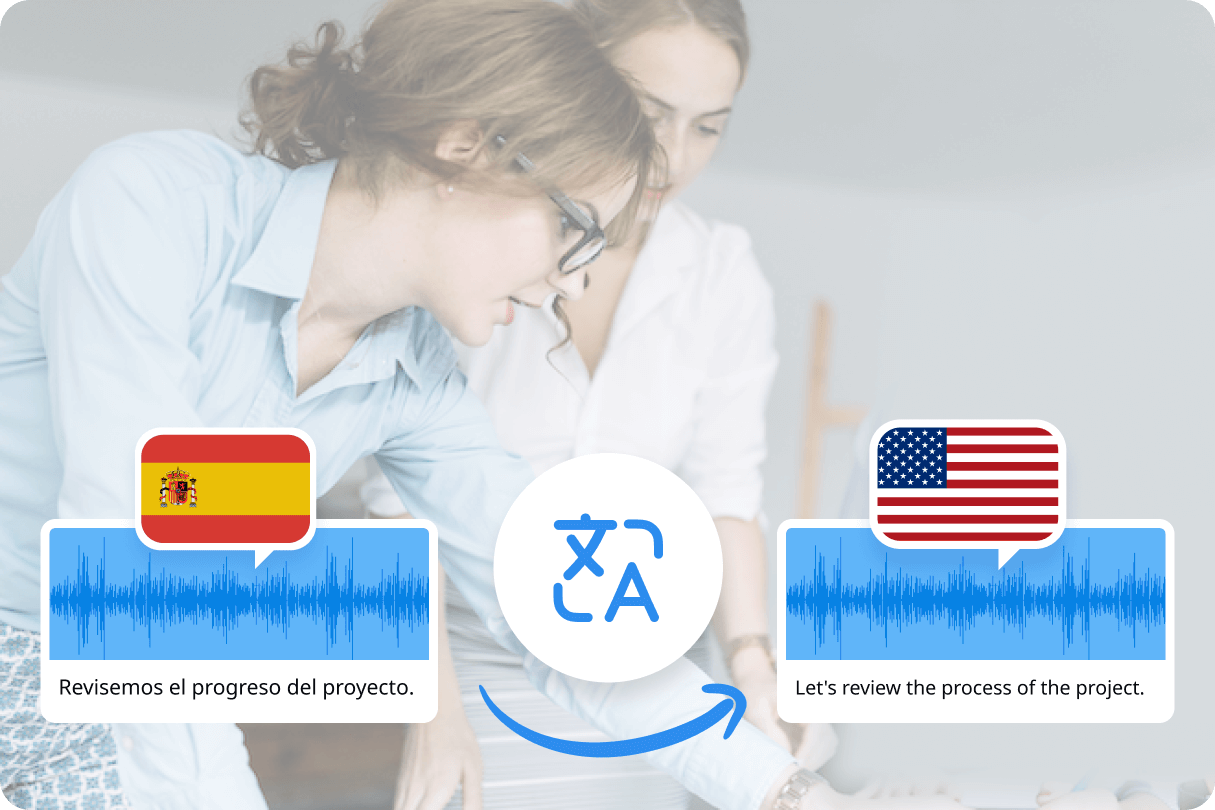Breaking Down the Process of Converting Spanish Audio Into English Text
Key Takeaways:
- Understanding the significance of accurate Spanish-to-English audio translation in a multicultural society.
- Exploration of the technology behind language translation services.
- Assessing the challenges of direct translation and the context of linguistic subtleties.
- Examining the role of human translators in the age of advanced AI.
- Data-driven analysis of the efficacy of various translation methodologies.
The Importance of Effective Communication Across Languages
In the vast expanse of our global community, the competence to communicate across different languages stands as a pillar of inclusivity and outreach. Nowadays, with the sprawling tendrils of globalization reaching every corner, an individual's or organization's method to translate Spanish to English audio deftly navigates the myriad of linguistic obstacles. It's not merely about exchanging words but about crafting a bridge for understanding that creates a canvas where diverse cultures can paint a coherent picture. Imagine international conferences where presentations are immediately understandable to all attendees or a customer support line that fluently addresses concerns in any language. These scenarios paint a vivid picture of an integrative world held together by the threads of effective multilingual communication.
Understanding Translation Technology
The rapid pace at which translation technology evolves is nothing short of a technological renaissance. As the gears of progress turn, we are witnessing an amalgamation of computational linguistics and machine power, churning out sophisticated translation tools. These advanced systems, equipped with the capacity to learn and adapt, are revolutionizing the translation industry. They rely on complex algorithms modeled after the complexities of the human brain, namely neural networks, and utilize machine learning to improve their linguistic capabilities over time. What was once the realm of science fiction, accurate real-time translation, is now a tangible asset, dismantling language barriers one sentence at a time.
Machine Translation: Unveiling the Magic
At the cutting edge of these translation advancements lies machine translation, the crux of AI's linguistic prowess. It's a sophisticated dance of algorithms and databases where the software peruses vast libraries of translated texts, identifying patterns and drawing parallels between language pairs—effectively mapping the Spanish language to English counterparts. More than just substituting words, these programs adapt to the twists and turns of linguistic structures, striving for parity with the language and the cultural backdrop that cradles it. For each sentence processed and each paragraph translated, there lies a calculation that adds to the richness of the translation, increasingly refining the system's language model toward perfection.

Challenges in Cross-Language Translation
However, Spanish-to-English translation is not immune to pitfalls, as the craggy language paths are laden with cultural nuances and colloquialisms that aren't easily traversed. Spanish is a tapestry woven from the dialects and lexicons of multiple regions and countries, each with distinctive patterns. When attempting to transfer these linguistic fibers into the fabric of English, it is crucial that translators—whether human or machine—can discern the intended hues and textures of meaning. Otherwise, the interweaving risks becoming a haphazard pastiche that does little justice to the original eloquence or the message's intent.
Preserving Nuances and Context
Certainty in translation comes from carefully preserving the source language's quirks and embellishments. Precision here is king, for context is the lifeblood that breathes life into the communication corpus. A misplaced word or an overlooked idiomatic expression can lead to misunderstandings or, worse, a complete communication collapse. In these circumstances, the translation system's adaptive learning and capacity to recognize and adjust to the nuances of context and culture becomes paramount. The meticulous fusion of linguistic accuracy and contextual awareness ultimately decides the translation's success or failure.
The Human Touch in Translation
Despite the groundbreaking technological strides, one element remains challenging to encode into silicon and circuits: a human translator's nuanced judgment and empathetic insight. Human translation is an art form where each word is weighed against its emotive value, every sentence structure is chosen to reflect the right cadence, and every paragraph is infused with an understanding of the cultural context. These translators bring the accumulated knowledge of lifetimes spent navigating the intricate language web. Furthermore, their hands hold the keys to the subtle doors that no algorithm has been able to unlock—those of poetic nuance, sarcasm, and the intangible resonances that only the human ear seems tuned to catch.
Choosing the Right Approach
So, how does one navigate the decision-making river when confronted with the choice of automated versus human translation? The digital tools are seductively fast, ingeniously efficient, and often a mouse click away. Yet, they may falter when strokes of cultural sensitivities are needed to paint the bigger picture. Thus, understanding when to deploy the unerring efficiency of machines and when to rely on the dexterous finesse of human translators can significantly elevate the quality of cross-linguistic communication. Sometimes, the most potent approach lies in a harmonious mixture, a finely balanced cocktail of machine speed and human intellect, harnessing their collective strengths to produce translations that are at once prompt and resonant.
Efficacy of Different Translation Tools
When scrutinizing the cornucopia of available translation tools, their proven efficacy emerges as the key—an attribute best measured through rigorous testing and feedback from multifaceted real-world usage. Indicators like time-to-translate, contextual accuracy, and user satisfaction surveys are benchmarks gauging a tool's effectiveness. The feedback loop created by these measures informs developers. It leads to fine-tuning these linguistic instruments, ensuring they cater to linguistic correctness, user experience, and ease of interaction.
A Comparative Analysis
One must wade through data with a discerning eye, carefully evaluating the offerings of different translation solutions. Are they delivering translations swiftly, or are they meticulous guardians of linguistic accuracy, smoothing out the edges at a measured pace? While direct comparisons can be challenging due to the varied nature of specific user demands, the pursuit of perfect balance continues unabated.

